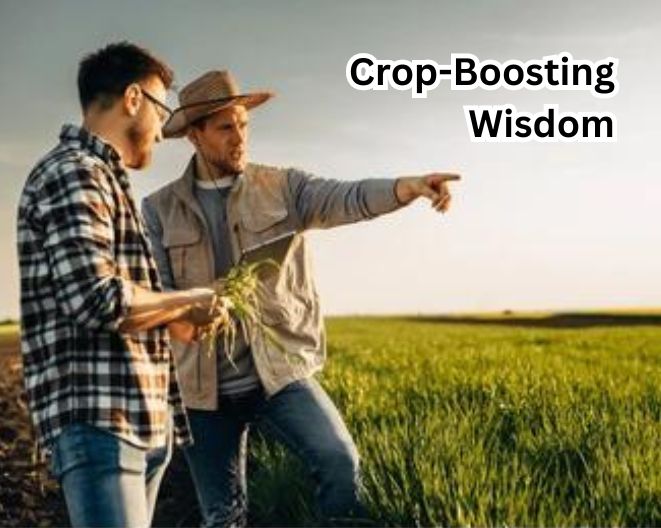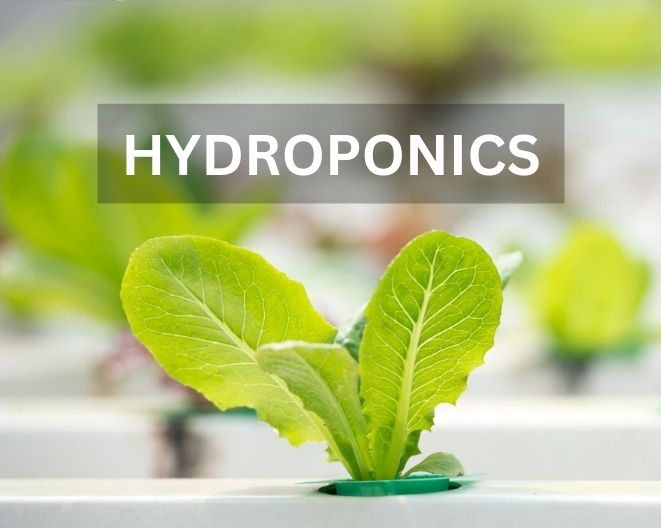In the ever-evolving landscape of agriculture, the integration of Internet-of-Things (IoT) devices marks a revolutionary shift. Farmers are increasingly adopting these technological marvels and revolutionary tools to streamline processes, enhance efficiency, and elevate overall crop yield. In this comprehensive exploration, we delve into the multifaceted realm of the Internet of Things in agriculture, unraveling the true nature of these game-changing innovations. The phrase “Which of the Following Is True of Internet-of-Things Devices” echoes throughout the agricultural sector, prompting farmers to embrace the transformative power of interconnected technologies.
Let’s embark on a journey to understand not only the true nature of these devices but also how they are reshaping the very fabric of modern farming practices.
Decoding IoT Devices in Agriculture
IoT Integration
As we embark on the journey of decoding IoT Devices in Agriculture, it’s imperative to delve deeper into the intricate web of interconnected technologies that define this transformative landscape.
Understanding the Components
At the heart of the integration of the Internet of Things in agriculture lies a symphony of interconnected sensors, actuators, and smart devices. These components, working in tandem, form the backbone of a sophisticated system designed to collect and transmit real-time data. This data, ranging from soil conditions to crop health and equipment performance, offers a panoramic view of the entire farming process.
Beyond Individual Devices
It’s essential to recognize that the true power of IoT devices lies not just in their functionalities but in their seamless interconnectivity. The collective intelligence derived from these devices provides farmers with a holistic understanding of their agricultural operations. This interconnectedness serves as a linchpin for effective decision-making, enabling farmers to navigate challenges with precision and foresight.
Transforming Raw Data into Actionable Insights
Decoding which of the following is true of IoT devices involves not only collecting vast amounts of data but also transforming it into actionable insights. Advanced analytics algorithms process this data, unveiling patterns, trends, and correlations. These insights empower farmers to make informed decisions, optimizing resource allocation, and enhancing overall operational efficiency.
Navigating Resource Optimization
Precision Farming
The question, “Which of the Following Is True of Internet-of-Things Devices,” finds a profound answer in the realm of resource optimization. Precision farming, made possible by IoT devices, signifies a shift from traditional, resource-intensive practices to targeted and efficient methodologies.
Smart Irrigation Systems
Within the scope of resource optimization, smart irrigation systems emerge as exemplars of IoT applications. These systems transcend conventional irrigation by analyzing soil moisture levels and incorporating real-time weather data. The result is a precise and efficient water delivery mechanism, conserving water resources while promoting healthier crop growth.
Sustainable Agriculture
Resource optimization, facilitated by IoT devices, not only enhances productivity but also fosters sustainability. The judicious use of water, fertilizers, and other resources minimizes environmental impact, aligning agricultural practices with principles of ecological balance.
As agriculture embraces the era of IoT, the landscape evolves into a realm of precision, efficiency, and sustainability.
Empowering Crop Monitoring and Management
Internet of Things in Agriculture
In the ever-evolving landscape of agriculture, the paradigm of crop monitoring and management undergoes a profound transformation through the integration of Internet-of-Things (IoT) devices. This section delves into the multifaceted ways in which these technological marvels empower farmers to become vigilant custodians of their crops, ushering in a new era of precision and proactive decision-making.
The Precision Agriculture Revolution
Crop monitoring and management, once reliant on traditional methods, now embraces the precision agriculture revolution by exploring which of the following is true of Internet-of-Things devices. These innovations equip farmers with an arsenal of wireless sensors that meticulously track crucial factors influencing crop health. From temperature and humidity to nutrient levels, these real-time insights enable farmers to orchestrate a symphony of interventions tailored to the specific needs of each crop.
Wireless Sensors
At the core of empowering crop monitoring is the deployment of wireless sensors across fields. These sensors act as vigilant guardians, collecting granular data on environmental conditions. This data, transmitted in real-time, paints a vivid picture of the crop’s health, allowing farmers to detect anomalies promptly.
Mitigating Risks
Armed with real-time data, farmers can implement early intervention strategies. Whether it’s adjusting irrigation schedules, fine-tuning nutrient applications, or deploying pest control measures, the ability to identify issues at their inception minimizes the risk of crop loss. This proactive approach not only preserves yields but also contributes to the overall health and resilience of the crops.
The Dawn of Smart Farming
Intelligent Insights for Strategic Decisions
The empowerment inherent in crop monitoring extends beyond the act of observation. Exploring which of the following is true of IoT devices provides intelligent insights derived from data analytics. Farmers can identify patterns and trends, allowing for strategic decisions that go beyond immediate concerns. This futuristic approach to farming marks the dawn of smart agriculture, where every decision is informed by a wealth of actionable data.
Customizing Crop Management
Each crop has unique requirements, and IoT devices empower farmers to customize crop management strategies accordingly. From adjusting irrigation levels based on specific moisture needs to tailoring nutrient applications for optimal growth, precision agriculture has become a reality. This tailored approach not only maximizes yields but also minimizes resource wastage.
How to Control IoT Devices
In the dynamic realm of the Internet of Things (IoT), the ability to control devices seamlessly is paramount. This section serves as a comprehensive guide, unveiling the intricacies of mastering control over IoT devices. Whether you are a novice navigating the IoT landscape or a seasoned user looking to enhance your control capabilities, this guide offers insights into the diverse methods and considerations involved in managing, commanding, and nominating Which of the Following Is True of Internet-of-Things Devices?
1. Device Compatibility: A Foundation for Control
Before delving into the specifics of control, it’s crucial to ensure that your chosen IoT devices are compatible with your control mechanisms. Different devices may operate on varying communication protocols and standards. Whether it’s Zigbee, Z-Wave, or Wi-Fi, understanding and verifying compatibility lays the groundwork for effective control.
2. Centralized vs. Decentralized Control
Understanding how to control IoT devices involves deciding between centralized and decentralized control systems. Centralized control often utilizes a central hub or a dedicated application to manage all connected devices. On the other hand, decentralized control allows individual devices to communicate directly with each other. The choice depends on your preferences, the complexity of your IoT ecosystem, and the level of control you desire.
3. Mobile Applications: The Power in Your Hands
Many IoT devices come with dedicated mobile applications, providing a user-friendly interface for control. These applications enable you to manage and monitor devices from the convenience of your smartphone. From adjusting smart thermostats to controlling smart lighting, having control in the palm of your hand enhances accessibility and ease of use.
4. Voice Commands: The Rise of Virtual Assistants
Voice-controlled IoT devices have gained immense popularity. Integrating virtual assistants like Amazon Alexa, Google Assistant, or Apple’s Siri allows for hands-free control. By issuing simple voice commands, you can dim the lights, adjust the temperature, or even lock doors. This intuitive and futuristic method of control adds an extra layer of convenience to your IoT experience.
5. Automation: Effortless Control Scenarios
Take control to the next level by incorporating automation. Platforms like IFTTT (If This Then That) allow you to create custom automation scenarios. For example, you can set up a trigger to turn on the lights when motion is detected or adjust the thermostat based on the weather forecast. Automation not only simplifies control but also enhances the efficiency and responsiveness of your IoT ecosystem.
6. Security Protocols: Safeguarding Your Control
As you explore how to control IoT devices, prioritizing security is non-negotiable. Implement robust security protocols, such as strong passwords, two-factor authentication, and regular firmware updates. This ensures that your control over IoT devices remains secure and protected from potential cybersecurity threats.
7. Cloud-Based Control Platforms
Many IoT devices leverage cloud-based control platforms, allowing users to manage their devices remotely. Whether you are at home, at work, or traveling, accessing a centralized cloud platform provides a seamless and consistent experience. Ensure that the chosen platform aligns with your privacy preferences and offers a reliable connection to your IoT devices.
8. Customizing Control Interfaces
Tailor the control interfaces to align with your preferences. Some IoT devices offer the flexibility to customize control panels, allowing you to prioritize and organize the most frequently used features. This level of personalization enhances the user experience, making control more intuitive and user-friendly.
9. Regular Updates and Maintenance
To maintain optimal control over your IoT devices, stay proactive in performing regular updates and maintenance. Manufacturers often release firmware updates that introduce new features, enhance security, and improve overall performance. Keeping your devices and control systems up-to-date ensures a smooth and reliable experience.
10. Integration with Smart Hubs
For users with diverse IoT devices, integrating a smart hub can streamline control. Smart hubs serve as centralized controllers, unifying various devices under a single ecosystem. This simplifies the control process, allowing you to manage multiple devices seamlessly from one interface.
Conclusion
The exploration of “Which of the Following Is True of Internet-of-Things Devices” in agriculture unfolds a transformative narrative where IoT devices become catalysts for efficiency, sustainability, and precision. The journey delves into the pivotal role of IoT in resource optimization, vigilant crop monitoring, and tailored control methods, echoing the guide on “how to control IoT devices.” This symbiosis of technology and agriculture not only reshapes farming practices but also paves the way for a future where the Internet of Things in agriculture emerges as a cornerstone for innovation and a powerful force in orchestrating a greener, more resilient agricultural landscape. The repeated question becomes a testament to the affirmative impact of IoT devices, marking a paradigm shift that propels agriculture into the era of smart and sustainable farming practices.
FAQs
When exploring the question “Which of the Following Is True of Internet-of-Things Devices,” it’s evident that IoT devices are physical objects embedded with sensors, software, and connectivity, enabling them to gather and exchange data. These interconnected devices play a pivotal role in various applications, providing valuable insights for improved efficiency and automation.
The cybersecurity aspect of Internet of Things (IoT) devices is crucial. True statements include the need for robust security measures to protect against potential cyber threats. This involves implementing encryption, secure authentication, and regular software updates to safeguard sensitive data transmitted and received by IoT devices.
It would depend on the specific statements provided, but generally, false statements might include misconceptions such as “IoT devices are always secure,” or “All IoT devices require constant internet connectivity.” The accuracy of the statement would be determined by the content of the options.
The Internet of Things (IoT) is a network of interconnected devices that communicate and share data through the internet. These devices, equipped with sensors and actuators, collect and exchange information to enhance efficiency, automation, and decision-making across various domains, ranging from healthcare and agriculture to smart cities and homes.





